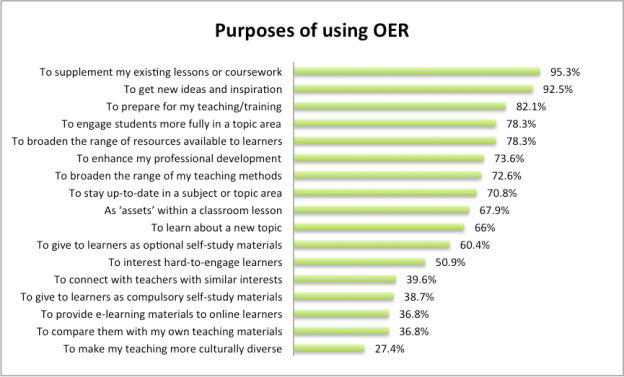This post was first shared via the Open Education Working Group blog.
In March of 2017 the Open Education Research (OER) Hub received a small grant from the William and Flora Hewlett Foundation to assess whether current US models of open textbook adoption would translate to the UK HE context. In a short space of time we put together under the UK Open Textbook Project a team of interested parties, which included David Kernohan and Viv Rolfe this side of the Atlantic, and David Ernst (Open Textbook Network) and OpenStax on American soil.
The cost of textbooks in the US is massive. Data from the Bureau of Labor Statistics reports that textbook prices have increased by 88% in the past ten years. The average student enrolling in the 2015-16 academic year had to budget between $1230 and $1390 for textbooks and course materials. To put this in context, a loaf of bread is $2.50 and a pint of milk, 40 cents. That’s over 3000 pints of milk and nearly 500 loaves of bread that you’d need to go without in order to purchase your textbooks (and we all know in bad weather what’s the first thing that goes from supermarket shelves). Seriously though, academic performance is also taking a hit: Student PIRGS says that two thirds of students don’t buy a required textbook because they are too expensive, with cost having a negative impact on which and how many courses they register for. Can you imagine how you would cope in your course without the textbook? Research tells us that earning a poor grade, failing or dropping out would not come as a surprise.
Josh spent $300 on textbooks when he would have rather spent that money on food! @OUSA #textbookbroke #foodovertextbooks pic.twitter.com/dLmZ9OZEIB
— MSU Advocacy (@MSU_Advocacy) January 12, 2018
The Open Textbook Library defines open textbooks as “textbooks that have been funded, published, and licensed to be freely used, adapted, and distributed. These books can be downloaded for no cost, or printed at low cost”. Because they serve to offset the cost of traditional textbooks, open textbooks have a reason to exist, and the fact that $5 million have been put aside by Congress to fund an open textbook grant program demonstrates that in the US the issue is treated with grave concern. However, is cost a valid argument to adopt open textbooks in the UK? In a recent report on the financial position of students in higher education in England, commissioned by the Department for Education we learn that:
“Compared with the cost of tuition fees, expenditure on direct course costs made up a smaller proportion of full-time students’ participation costs – they spent on average £512 (six per cent of total participation costs) on these items in the 2014/15 academic year. Fulltime students spent the most on computers (£253), followed by printing, photocopying and stationery (£105), then books (£101) and other equipment (£31).” (p. 279)
£101 does not sound like a lot of money, does it? Students in England are delivered a brutal blow by having to pay fees of £9000 a year, not by the amount of money spent on textbooks. It is true that we don’t want to add to their woes and anything we can save them comes as a bonus. What I’d like to highlight here is that if open textbooks are to be adopted in the UK, we need to look beyond cost and sing out loud what we (teachers and students) can do with an open textbook that we can’t do with a traditional textbook. My emphasis in the above definition has to be on “licensed to be freely used, adapted and distributed”.
As part of the work carried out by the UK Open Textbooks Project, the team ran a total of fourteen workshops in eight HE institutions in England, Scotland and the Republic of Ireland. The aim of these was to raise awareness of open textbooks and to invite participants to review an open textbook from the Open Textbook Library. As it happened, I facilitated workshops in Glasgow Caledonian University, where registration fees are zero pounds, and NUIGalway, where students pay a ‘contribution’ of €3000 per year. Neither of these universities would see cost as the only swinging logic to use an open textbook in the classroom, but both could reasonably buy into the idea of an open textbook as a living creature that can be adapted ad libitum. An open textbook is more than free; it is free with permissions; permission to reorder chapters, localise examples, translate into any language, add content to, delete paragraphs, link to external sources, and more. More. More. Think about it. Ask your students to think about it.
If you do and you’d like our support, get in touch: @UKOpenTextbooks.














